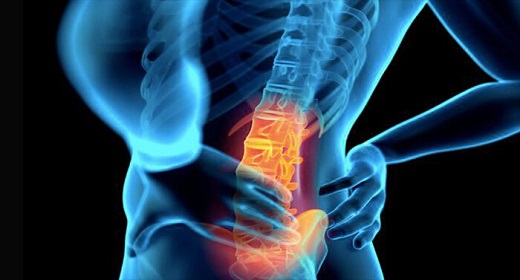Considered by many as a “super food”, the health benefits of chia seeds are numerous…
They’re small, easy to add into a meal or drink. Yet they give you lot of nutrition.
These seeds used to be something only health enthusiasts knew about.
But today, they’re popularity continues to grow. More and more people are learning about the health benefits they offer.
Whether to improve health or your athletic performance, these little seeds are something you should try.
Chia Seeds Nutrition Facts
Chia seeds are a natural food. And, despite their small size, they’re loaded with lots of nutritional value beneficial to our health.
- They are valued for their Omega-3 fatty acid content. This makes them an alternative to fish oil, especially for those who don’t like the “fishy taste”.
- The seeds are a good plant source of protein. One ounce gives you over 4 grams of complete protein.
- Chia is also a good non-dairy source of calcium. They are a good option for anyone who is lactose intolerant or doesn’t include dairy in their diets.
These 3 factors make chia seeds a very valuable source of nutrition for vegetarians and vegans.
Other benefits of chia seeds include their dietary fiber, B vitamins, magnesium and phosphorous. Plus, they contain many other nutrients needed by our bodies to function well.
Health Benefits of Chia Seeds
1. Chia Seeds have More Omega-3 than SalmonChia seeds are one of the highest sources of Omega 3 fats.
One 28 gram ounce contains 4,915 mg of Omega-3 fatty acid.
Omega 3’s are essentially fatty acids our bodies cannot produce on its own. Therefore, we need to get them from food.
Fatty fish is often the go-to source for Omega-3.
But, if you don’t include meat in your diet, don’t like fish or are allergic to them, then chia is a good alternative.
These seeds actually contain more omega-3 compared to salmon.
Though it is important to note that the omega-3 in chia is mostly Alpha Linolenic Acid (ALA). ALA isn’t as effective as EPA and DHA. That’s because our bodies need to convert ALA, and isn’t too efficient at doing so.
To get the most out of their omega-3’s, grind them or have them milled instead of taking them whole.
The grinding process has been proven to let the body get more ALA and EPA out of chia, compared to when eaten whole.
2. Chia Seeds are a Rich Plant-based Source of Complete Protein
Chia seeds are a high-quality source of protein. They also offer non-meat eaters a way to get sufficient protein from their diets.
One ounce of chia seeds (around 2.5 tablespoons) contains 4.7 grams of protein.
What’s even better is that chia seeds are a plant-based source of complete protein.
It contains all the 9 essential amino acids, including lysine and leucine. This is one reason vegetarians and vegans love these seeds, especially athletes.
Protein is needed by the body to repair and rebuild muscles. It is also needed by the body to function properly.
Along with peanut butter, chia seeds are a great way to get protein without relying on beef, chicken or dairy.
3. They’ll Give You an Energy BoostChia seeds help boost stamina and athletic performance.
You can actually use them as an alternative to sports drinks since they offer similar effects.
A study compared runners who were given the sports drink Gatorade, with those who were given a chia-based beverage.
The two groups performed similarly, showing that the Gatorade group did not have any advantage over the chia drink group.
One advantage the chia group did have is that they didn’t consume as much sugar. This lets them burn more calories.
The seeds contain nutrients that help keep us hydrated. They also improve our stamina. They are full of carbohydrates. Plus, they are able to absorb up to ten times their own weight when in liquid form.
It is due to this great absorption rate that they don’t have effects on your blood sugar like other carbs do.
As a result, they prevent carbohydrates from being broken down quickly. This helps you sustain good energy levels through the day without experiencing a sugar crash.
So go ahead, drink a chia smoothie before a grueling workout or yoga class.
4. One Serving Gives You 40% of Your Daily Fiber Needs
Among the biggest nutrient contributions of chia seeds is their fiber content.
For every ounce (28 grams) of chia, we get a total of 10 grams of dietary fiber. This makes up 40% of our daily needs.
Since the average American doesn’t get enough fiber on a regular basis, adding the seed to your diet can make a big difference.
Fiber helps stave off hunger. It also keeps our cravings satisfied for longer periods of time. This is due to their slow digestive rates.
Chia seeds have the extra benefit of improving digestion and the body’s ability to move food down the line.
The St. Michael’s Hospital in Canada did a study using chia seeds to see its effects on post-meal glucose levels. In the experiment, the researchers baked the seeds into bread eaten by the participants.
After 3 months of chia seed supplementation, results revealed that the participants’ were less hungry 60, 90 and 120 minutes after the meal. They also had lower blood glucose levels post-meal.
As an added benefit, participants saw their blood pressure improve as well.
Other studies done on chia seeds show that it helps regulate blood sugar thanks to its Omega-3 fats and its fiber content.
These seeds likewise help ward off digestive issues by introducing gut friendly bacteria into our intestines.
5. They’re Great for Weight Loss and Staying SlimChia Seeds are often used by people who want to lose weight.
This is thanks to their absorbency feature, plus nutrients they contain.
Ten of the 12 grams of carbs in chia seeds comes from dietary fiber, which digests slowly. This keeps us feel full for longer periods of time.
The carbs in chia are slowly absorbed because the seeds expand while in our stomach. This happens when they’re mixed with water.
The seeds absorb the liquid and become gelatin-like, thanks to the soluble fiber content in them. This makes them take up more space in our belly, keeping us less hungry longer.
The added benefit of the slower digestion is that it suppresses our appetites and stabilizes blood sugar in the body.
Research by health experts shows that chia seeds have the ability to reduce appetite by around 50 percent. The same research states that the regular recommended dose of chia seeds helped participants lower their blood sugar by 33 percent.
6. Chia Seeds are Packed with Antioxidants
Many studies show that these seeds contain antioxidants.
For their size, they are quite a bit. These include flavonols, kaempferol, caffeic acid, chlorogenic acid, quercetin to name a few.
These antioxidants work together to prevent inflammation and ward off diseases. Among the chia’s most powerful antioxidants is quercetin.
Researchers have found that quercetin helps boost energy and fights fatigue. This makes it excellent for athletes who need to train or compete at high levels.
Apart from the added energy boost, quercetin also improves stamina and endurance.
Other studies also note that this antioxidant not only affects our body’s muscles energy but also our brain. It boosts memory and improves mood.
Together with other antioxidants, like chlorogenic acid, kaempferol, and myricetin, quercetin has disease-fighting abilities. Plus, protects us from type 2 diabetes, cancers, and heart disease.
7. They Assist with Electrolyte Balance and HydrationChia seeds have a fiber component. This lets them retain a lot of water.
It also explains why many athletes eat chia seeds a few hours before training or competition.
It helps them perform better because they’re more hydrated.
As a bonus, the seeds help maintain your body’s electrolyte balance for longer periods.
For endurance athletes and medium to long distance runners, getting a chia drink or smoothie before training or competition can help prevent dehydration.
8. They Lower Your Risk of Diabetes
Studies show that eating certain types of foods, particularly those with low glycemic index (GI) and indigestible carbohydrates, help limit post-meal increases in blood glucose.
Frequent spikes in the blood sugar are associated with higher risks of both heart disease and type 2 diabetes.
Thanks to the fiber and protein in chia, food digests slowly. This curbs hunger for a longer time.
It also helps regulate our blood sugar. This prevents us from experiencing large blood glucose spikes after meals.
The Clinical Nutrition and Risk Factor Modification Center at St Michael’s Hospital in Toronto reports that healthy individuals can benefit from this.
In the study, 2 hour post meal blood tests showed that both whole seeds and those that were milled were effective in reducing blood glucose levels.
9. They Boost Brain Power and Mental FunctionOmega-3 is helpful for the brain.
They are healthy.
And, help anyone suffering from mental conditions like depression.
In addition, the omega-3 in chia helps boost your brain function. This leads to better transmission of the nerves, aside from improving your mood.
The healthy fatty acids also help lower cholesterol too. Plus, they’re good for your liver.
Chia seeds are one of the highest sources of omega-3 fats with over 4,900 mg per one ounce serving.
Omega 3 fats protect us from cognitive decline, dementia, and Alzheimer’s disease. They also help alleviate depression symptoms.
10. They’re Great for Your Bones
It is not easy to determine how much calcium you’re getting. It is even harder to know whether you are getting enough of it.
Here’s where chia seeds can help.
It is a good alternative to milk. They’re also great for anyone who doesn’t like dairy or is on a non-dairy diet.
This is because these products contain more calcium than milk.
Many people prefer them over milk because they are easier to digest. Plus, there’s no issue with lactose intolerance.
Every time you eat chia, you get 4 of the 5 essential nutrients needed for bone development. The bonus, you get a lot of each.
For every ounce of chia (around 2.5 tablespoons), we get:
- Calcium: 17% of our daily RDA.
- Magnesium: 23% of our daily RDA.
- Phosphorus: 27% of our daily RDA.
- Protein: 4 grams of a complete protein.
The only essential component missing for bone growth is vitamin D.
11. They Fight Aging and Make Skin & Hair HealthierChia seeds are high in antioxidants and Omega-3.
Together, they help protect your skin from damage. These nutrients are also essential for repairing it.
Antioxidants have anti-inflammatory properties. They work to balance out free radicals that cause harmful health issues like cancer and cardiovascular disease.
Another benefit antioxidants offer is they prevent free radicals from damaging cells that cause our bodies to age faster. This keeps your skin smooth and looking young.
Chia seeds are also a good source of B vitamins. They’re high in Thiamin (Vitamin B1) and Niacin (Vitamin B3).
Two and a half tablespoons of this super food give us close to 15% of the daily Vitamin B1 we need and 12% of Vitamin B3.
These B vitamins help our body process nutrients from foods to build our tissues and organs. They keep our nervous system functioning properly and promote healthy hair.
For this reason, many beauty and cosmetic products use oils extracted from chia seeds.
The omega-3 fatty acids and antioxidants, like phenolic acids and isoflavones, in chia also help moisturize skin. They prevent wrinkles and restore skin to its natural complexion.
12. Chia Seeds Help Build Muscles
Chia is a great source of protein.
Nutritionists have done research that shows these foods contain more protein than any grain alternative food. As a result, chia seeds are excellent options for anyone looking to increase their protein intake.
If you don’t include meat and dairy in your diet, adding this superfood gives you a complete protein. It contains all the 9 essential amino acids the body needs.
Together with the other nutrients and its energy boosting properties, this health food lets you take on your workouts and perform your best in training.
13. They’re Heart HealthyChia Seeds are rich in essential fatty acids, particularly omega-9, omega-3, and omega-6. All of which are proven to be essential for a healthy heart.
Heart disease is responsible for 1 of every 4 deaths in the United States. It is also the leading cause of death in both men and women.
Working together, the nutrients in chia, along with its fiber and essential fatty acids help lower the risk of metabolic syndrome. These include type 2 diabetes and high cholesterol, which are associated with cardiovascular disease.
The St. Michael’s Hospital in Canada studied the effects of the seeds on cardiovascular risk factors. The goal was to find out whether the fiber in the seeds, their ALA content and minerals would help improve these risks.
The discovered that chia seeds helped in controlling both the lipid and glycemic levels. In doing so, lowering cardiovascular risk factors.
Those who were given chia seeds also had lower blood pressure. And, saw significant decreases in A1C. A1C is a test used to check the average blood sugar levels.
How to Add Chia Seeds into Your Meals or Drinks
Chia seeds are quite easy to include into your diet because of their small size.
This lets you start out with a few seeds. Then, add more into your meals or drinks.
These seeds do alter the texture of the food or drink you add them to. But, they don’t change its taste. That’s because chia has a very mild flavor.
One thing worth noting is not to wash the seeds before adding them to food or beverages.
They expand with water.
This makes them turn into a gel and become sticky. When they become gel-like, it’s harder to use or sprinkle them over food.
Here are 4 great ways to add chia seeds to your diet.
1. You Can Eat Them Whole
When it comes to enjoying these seeds whole, take a scoop, and:Sprinkle over food
The simplest way to enjoy chia seeds is to have them whole.
You can use them like you would sesame seeds. Just sprinkle them over bread or toast. You can also put them on your salad or yogurt.
Adding the seeds to breakfast boost its nutrients. Do this by adding a scoop to your oatmeal or bowl of cereal.
They’re so simple to use. There’s no need to do anything to them.
Just scoop them out of the jar and sprinkle over food.
You can incorporate them into your food
Another way of eating them whole is incorporating them into food.
You can add them to your sauces, soups or dips.
They mix in easily.
Plus, they help thicken the consistency and give more texture.
Chia seeds can also be added to breading, rubs or marinades that’s used to coat meats or other foods before cooking.
For the kids, you can use the old ‘sneak them into food’ trick.
Because they’re small, the seeds are easy to mix or infuse into meatballs, hamburger patties, meatloaf or other foods.
Mix them into your Drinks or Beverages
If you aren’t a fan of spending any prep time, add the seeds to a beverage.
The simplest would be adding a tablespoon into water, mixing it and leaving for a few minutes.
You can use the same method on juice, flavored drinks, coconut water or your workout smoothie. It will make the beverage thicker and give it a gel-like consistency.
Chia seeds help with hydration.
This makes them great to drink before a workout or training session.
2. You Can Ground the Chia Seeds (Grinding or Milling)
Chia seeds can be eaten whole and don’t you don’t need to ground them.
This is one of the differences between chia and flax seeds. The latter requires grinding to bring out the nutritional benefits.
If you aren’t a fan of the larger seeds or tasting them, grinding the seeds make it easier to mix them into food or drink. You can add them to juices, smoothies or soups.
They can also be mixed and used for baking. Or, added to flavoring or cooking.
Another reason you may want to take the time to grind the seeds is that they offer more omega-3 when prepared that way.
A study by Appalachian State University discovered this after asking one group of participants to take whole chia seeds while another group used ground chia seeds. The results showed that their nutrient values differed because of preparation.
After 10 weeks of consuming different preparations, the ground chia seed group had higher levels of alpha-linolenic acid (ALA) and eicosapentaenoic acid (EPA). Both ALA and EPA are the Omega-3 fatty acids we want to gain from the seeds.
3. You can Soak the Chia Seeds in a Pudding, Porridge or Water
Another favorite way of enjoying chia seeds is by making them into a pudding.
Doing this allows the chia to soak in a liquid of your choice.
Any type of milk is often a good choice.
If you’re vegan or vegetarian, you can use almond milk or other non-dairy milk as the liquid.
Chia soaks the liquid it is placed in.
It works in water, juice or milk.
Doing this makes it expand and become gelatin-like.
- Put a quarter cup of chia seeds in a sealable glass jar or a small jar.
- Then add milk to the seeds. You can use your favorite kind of milk. Almond milk works really well with chia.
- For taste, add a little vanilla extract and a sweetener. You can use maple syrup or honey as your sweetener.
- Put on the jar’s lid to seal the contents. Gently shake to disperse the chia. This helps keep the chia seeds from clumping together.
- Leave the jar in the refrigerator for 4 to 8 hours.
During that time the chia seeds will soak in the liquid and it will thicken up.
When you want to eat it, pull it out from the fridge and use a spoon to enjoy the pudding.
4. Include Them into Your Smoothies
 If you don’t like the texture of chia seeds but want their health benefits, one of the best ways to get them is by including them in your smoothie drink.
If you don’t like the texture of chia seeds but want their health benefits, one of the best ways to get them is by including them in your smoothie drink.
This way you mix the chia seeds into your drink.
And, the blending process makes them indistinguishable from the smoothie drink.
To make a chia smoothie drink, prepare your favorite smoothie recipe.
But before turning on the blender, add a tablespoon of the chia seeds. Then blend.
Chia Seed Recipes
If you prefer video demonstrations, here’s a short video.
It shows you some of the different methods mentioned above.
They all include quick and simple chia seed recipes. This will help you enjoy the benefits of this super food.
FAQs About Chia Seeds
You probably still have some questions about chia seeds.
Here are some frequently asked questions and their answers.
Q: What’s the difference between different colors chia seeds?
When it comes to their nutritional benefits, there is little to no difference between the different colors. They have similar nutritional profiles.
But, white chia seeds cost more. This is because they are produced in smaller batches. Other than price, there isn’t much variation between them when it comes to health benefits.
Q: How do I prepare them or eat them?
Please see the section on preparation and eating above.
Q: How do you store chia seeds?
Chia seeds can be stored in a sealed bag or closed container. This helps extend their shelf life.
Beyond that, there is no extra measure needed when storing them.
You can leave them at room temperature in your kitchen, pantry or dining room counter top. They do not need to be refrigerated.
They will last for many years left at room temperature.
Q: Should I wash or soak chia seeds before using?
Chia seeds don’t need to be washed before use.
When they are put in water or other liquids, they absorb the fluid. This makes them expand up to 9 times their original volume. Soaking in liquids also turns them into a gel.
Some people like to use the gel and you can do this as well. But, there is no need to wash or soak the seeds prior to use.
Q: Do I need to grind chia seeds before using them?
Chia seeds differ from flaxseed in that there is no need to grind them before use.
You can do so if you wish.
Grinding does let you get more Omega-3 from them. Ground chia seeds have been shown to offer more ALA and EPA levels compared to whole chia seeds.
If you don’t want to go through the messy grinding process, you can take them whole. See above for a few preparation techniques.
Q: How do chia seeds taste?
Chia seeds are small and crunchy.
They don’t have much of a taste because their flavor is very mild.
Many people will tell you that they don’t taste like anything. But if you want to compare, they taste similar to poppy seeds.
Due to their mild flavor, they take on the taste of what you put them in.
Eaten dry they are dense and give a crunch. When soaked in water or juice, or included in pudding or soups they have a gelatinous consistency.
Q: Are chia seeds gluten free?
Yes, there is no gluten in chia seeds.
This is one reason that those on the Paleo diet include these seeds in their meal plans. This also makes them safe for anyone with gluten intolerance or celiac disease.
Q: How much chia seeds can I eat per day?
There has been no set limit to eating chia seeds. A common suggested serving would be between 10 to 20 grams, once or twice a day.
They are very nutritious and healthy. But, eating a lot of chia may leave your feeling bloated because of the fiber content.
Q: How long do they store for and what’s their shelf life?
The seeds can be stored for very long periods of time at room temperature. They don’t need to be refrigerated.
Keep them in a sealed bag or container. These seeds will keep their nutritional value for 4 to 5 years left at room temperature, ie. your countertop or dining room table.
Conclusion
Very small in size, they’re packed with nutrition. Even better, the benefits of chia seeds are numerous.
They’re easy to incorporate into one’s diet and are something that your body will thank you for.

















































